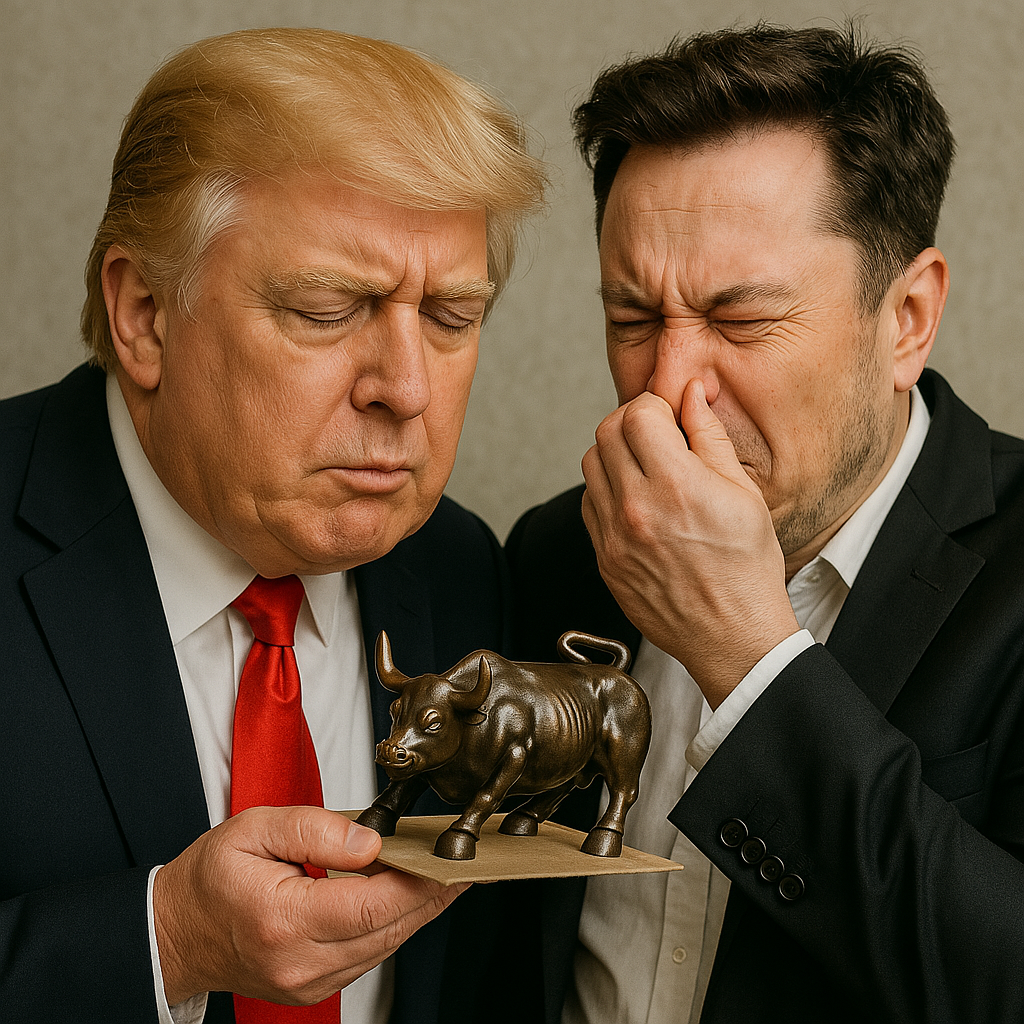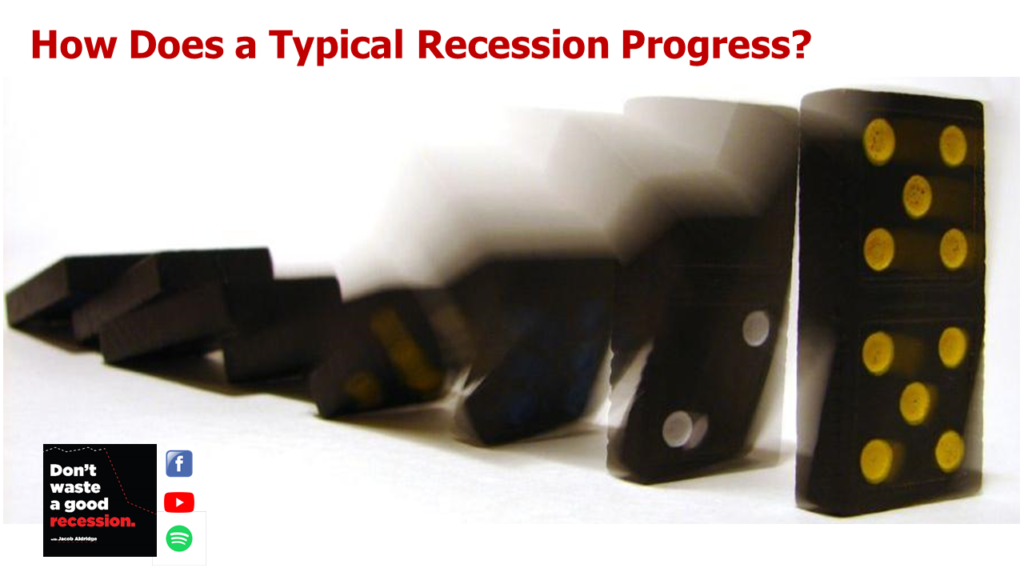Back by Populist Demand
Welcome to the Trump Dump, let’s be sure to seize this opportunity together.
A Brief Background
If you weren’t around when I started business coaching 20 years ago, you may not know I spent 2008-2013 speaking in the UK and Australia about the unfolding global financial crisis – and most importantly, the impact of the great recession on small & medium size business owners.
Economic Cycles formed some of my Blackboard Fridays content (2016-2019). In March 2020 I launched Don’t Waste a Good Recession, simplifying economic information to help business owners practically navigate the Coronavirus Recession. In 2022, I was nominated to the Virtual Speakers Hall of Fame in America for my work on the topic.
Regular readers of my newsletter may have noticed a few Recession-Readiness emails since President Trump’s inauguration: I’m all about practical action for businesses with 2-500 employees, and I’m ready if we need to go again.

Why is President Trump Implementing Tariffs?
There’s a lot of ink being wasted on “the economic reasons” for implementing these Tariffs.
But Donald Trump has proven himself to be a poor person‘s idea of how a rich person lives, with no underlying wisdom and no appreciation for the VUCA (volatility, uncertainty, complexity, and ambiguity) that guides modern economies.
There is no 3-Dimensional Chess here. Just a simple set of outdated historical assumptions that President Trump has latched onto.
- FACT #1 In the 19th century Income Tax was unconstitutional in the USA, and Tariffs were 70-90% of the federal government’s revenue.
While practical for revenue raising, Tariffs caused a crisis for the young democracy as early as 1828. Indeed the Civil War (ultimately 1861-1865) could have been triggered in 1833 as a result of Tariffs that were too high, but that Nullification Crisis was avoided.
On a large scale, hiking Tariffs was last tried in 1930. This was an attempt to curb the Great Depression, but The Smoot–Hawley Tariff Act (1930) is now understood to have made the Depression worse.
- FACT #2 In the 20th century the rising superpower legalised Income Tax, and as a result wound down overly-protectionist Tariffs.
This open-market approach ultimately allowed the USA to specialise and dominate on a global scale. Stable and predictable government revenues also funded government expansion – think the US Military, the New Deal, and the Great Society.
- FACT #3 Income Taxes have replaced Tariffs as the primary source of US government revenue, despite being reduced from a peak of 94% (during WWII) to a maximum individual tax rate today of 37%.
This is the overly simplistic world that Donald Trump sees.
- When Tariffs were high, Income Tax was low or non-existent.
- Today, Income Tax is too damn high (despite personally carrying-forward US$1.17 Billion in personal losses from bankrupting so many casinos).
- Therefore, if we bring back Higher Tariffs then we can implement Income Tax cuts.
So now you know why Donald Trump is implementing high Tariffs. It’s just so he can implement lower income taxes, with some headline-grabbing a bonus.
Geopolitics, Broader economic outcomes, Fairness and so forth – ignore anyone who says that’s the reason. He’s not that clever.

How Will This Impact your SME? (2 to 500 employees)
Current catastrophic headlines are mostly about stock market indexes: like the Dow Jones (USA), the S&P500 (USA), the NASDAQ (USA, more tech-oriented), the FTSE (UK), and the ASX 200 (Australia).
Stockmarkets are lead indicators for the economic health of an economy.
- Traders that move share prices do not buy and sell based on what they believe accompany is worth today.
- They buy and sell based on what they believe a company will be worth in the future.
When traders predict economic uncertainty or turmoil, they sell down shares. Indexes decline based on that future forecast.
A 20% drop is a technical “bear market” (Bulls toss markets higher with their horns; Bears pull them down with their claws) – the NASDAQ has breached that, and the S&P500 is expected to go below that milestone this week.
How Much of a Lead Indicator is This Bad News?
So crashing markets is a lead indicator for the (poor) health of your customer base, your local economy, and therefore your business. How much lead time varies.
- During the Great Recession (GFC for my Aussie mates) stock markets gave us ~6months head start about what was going to happen in the wider economy.
- During Covid, daily health data impacted so many economic decisions, and the heads up was much shorter: stock market movements, both up and down, gave us about a 1 month lead.
It’s unclear in April 2025 exactly how long it will take for these Tariffs (that have crashed stock markets) to genuinely start impacting your business. BUT…
My best guess today is that:
- If these tariffs are not reversed or reduced by Easter (and with Donald Trump’s brain farts that’s entirely possible) …
- Then we will expect to see unemployment rising in May and June.
- Unemployment figures are a lag indicator telling us what has already happened in the economy – June’s numbers will be released on July 3 in the USA, July 17 in Australia … and mid-August in the UK.
- So this bad news would mean people are already losing their jobs, and spending is contracting.
In other words, circumstances are moving fast and you need to be ready for it.

What Can You Do This Week?
For most of us, not is a time for reflection not panic.
(But to be clear: If you are:
- Exporting to the USA (where Tariffs will apply)
- Importing into Australia (where the AUD is plummeting), or
- 50% of your client based fit those descriptions
then it’s time to assemble your Recession War Cabinet.)
Circle of Control v Circle of Concern
Five years ago this week my Coronavirus Recession workshop talked about your Circles of Control, Influence, and Concern – how as leaders we must put our energy on the things we can control and influence … and not let ourselves be distracted or concerned by things (like the price of Shares in China) that are outside of our influence.
Here are the 4 things I want you to review in your business – the keys to benefiting from the economic opportunity a recession creates.:
- Your Market. How are your customers and future customers responding to current circumstances? How will they change if this continues? What are you doing to move with their changes and not be left behind?
- Your Management Capability: Recessions are rare – do you and your leadership team have the skills to navigate and communicate successfully? If not, where can you find them?
- Your Mindset: Would a deep recession be the end of your business, or a huge opportunity to take marketshare? The most successful leaders feel the fear, but don’t let it derail their strategy.
- Your Money: My coaching clients have been cashing up for some time – what are you doing to do this week to build your cash reserves?
Take the Good Recession online diagnostic. In less than 5 minutes, I will ask you a series of question that address all four of these areas.
It is still possible President Trump with pull a Liz Truss, and this course of action will be reversed. For reasons I will elucidate another day, that may not be enough to stop the spiral downward – you need to be prepared.

In Conclusion
My subject line is a quote from The Economist – they are rarely that direct.
I’m rarely this verbose, but if it helps you then I will continue this conversation in Friday’s emails (or separately where timely) so be sure to subscribe.
Take the Quiz – 5 minutes today might save your business, or (like most of my business coaching clients) help you to continue thriving and growing in spite of the wider economy.
You Have Control
And ultimately this is my message: Trade Wars, Crashing Markets, Penguin Islands are outside of your control … but you retain high agency about how you and your business respond.
Focus on that, not the headlines.
As SME business owners we have been gifted a lead indicator to customer uncertainty and, perhaps, a recession – don’t waste it.





